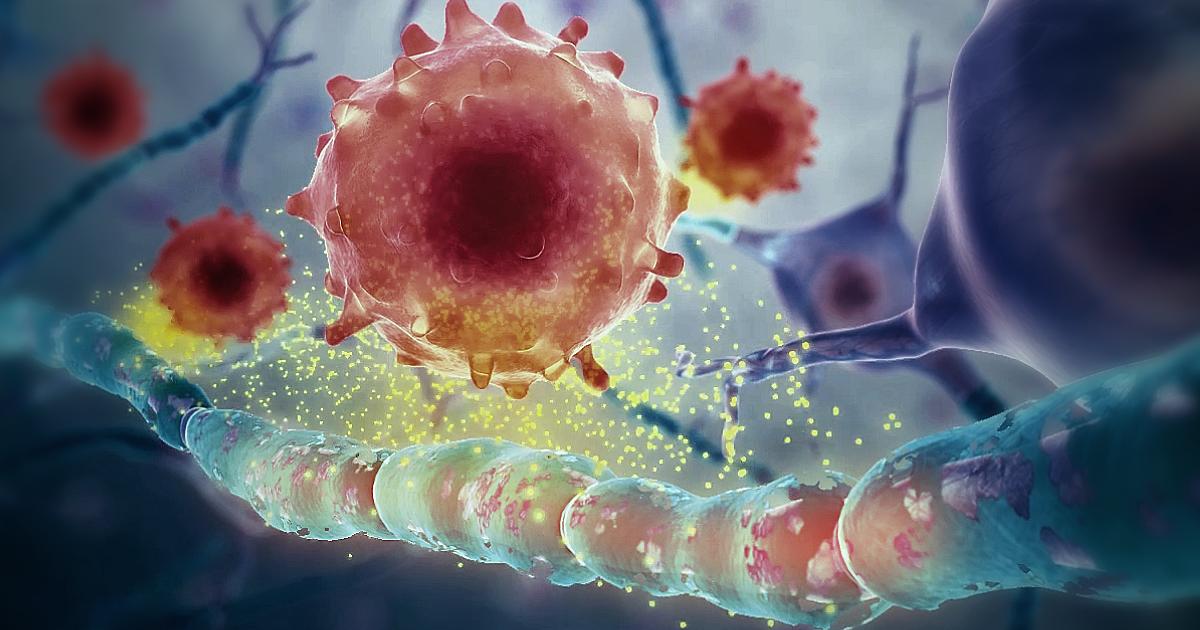Causes And Risk Factors Linked To Multiple Sclerosis
Multiple sclerosis is a long-term disease with debilitating effects on the spinal cord, brain, and optic nerves. It causes patients to have progressive problems with balance, vision, muscle control, and numerous other basic functions of the body. There are numerous variations of multiple sclerosis characterized by the disease course. Even though nerve damage is a common characteristic of everyone affected by multiple sclerosis, the pattern the disease and its symptoms follow is unique to each patient living with it. A diagnosis is made using long-established criteria and the elimination of other possible causes of a patient's symptoms. Spinal fluid analysis, magnetic resonance imaging, and blood tests are often used to rule out other possible conditions and diseases. There is no known cure for multiple sclerosis, and treatment focuses on managing symptoms, slowing disease progression, and expedited recovery from attacks.
Learn about the causes and risk factors linked to multiple sclerosis now.
Immune System Malfunction

The immune system of multiple sclerosis patients causes the central nervous system or the brain and spinal cord to become inflamed and damaged. There are a few main types of immune cells involved in the affected individual's abnormal immune response. T-cells enter the central nervous system through the blood vessels after becoming activated in the lymph system. When the T-cells enter the central nervous system, they release harmful chemicals that cause damage and inflammation to the tissues of the brain and spinal cord. Damage occurs to the nerve fibers, their myelin sheathing, and the cells that produce myelin. The type of cells in the immune system responsible for deactivating inflammation or T-regulatory cells are non-functional in multiple sclerosis patients. T-cells help activate the other type of immune system cell involved with multiple sclerosis called B-cells, which stimulate the action of certain proteins and make antibodies that cause direct damage to the cells in the central nervous system. A combination of these malfunctions in an individual's immune system causes multiple sclerosis to occur.
Learn more about the risk factors of multiple sclerosis now.
Gender And Age

An individual's gender and age may have an impact on their risk of developing multiple sclerosis. The relapsing forms of multiple sclerosis such as relapsing-remitting multiple sclerosis and progressive-relapsing multiple sclerosis are found much more commonly in females than they are in males. In primary-progressive multiple sclerosis and secondary-progressive multiple sclerosis, the distribution of individuals who are affected is equally divided between males and females. Multiple sclerosis is diagnosed between forty-five and sixty-four years old more often than it is within any other age groups. Between thirty and thirty-five years old is when most individuals tend to experience their first symptomatic manifestations of multiple sclerosis. Different types of multiple sclerosis affect certain age groups in different ways than others. For example, individuals who are fifty years old or older at the time they are diagnosed with multiple sclerosis are more likely to be affected by one of the more progressive variations of the disease.
Continue reading to reveal more risk factors associated with multiple sclerosis now.
Thyroid Disease

Individuals affected by thyroid disease may be at an increased risk of developing multiple sclerosis. Thyroid disease occurs when an individual's thyroid gland produces too little or too much thyroid hormone. Hypothyroidism, the production of too little thyroid hormone, is a common occurrence among patients diagnosed with multiple sclerosis. Individuals affected by multiple sclerosis naturally have a deficiency in some of the enzymes required for their small intestine to digest certain dietary proteins. These dietary proteins are made up of amino acids required for the body to perform numerous critical functions. Due to this mechanism, multiple sclerosis patients lack the amino acids tyrosine and phenylalanine. The thyroid gland requires an adequate supply of tyrosine in order to make enough of both of the main thyroid hormones. This chain of events can explain why hypothyroidism is commonly associated with multiple sclerosis.
Uncover the next multiple sclerosis risk factor now.
Climate

Climate can be one of the few environmental factors that can increase an individual's risk of developing multiple sclerosis. This condition occurs most commonly in the regions of the world that are furthest away from the earth's equator. Individuals who were born in one area but migrated to another area before they reached fifteen years old assume the multiple sclerosis risk of the new area. Individuals who live in regions characterized by temperate climates like Canada, New Zealand, northern United States, Europe, and southeastern Australia have a greater risk of developing multiple sclerosis than those who live in warmer climates. The reason for this is because surpassing exposure to sunlight in warmer regions allows an individual's body to produce a greater amount of vitamin D. The exact mechanism is unclear, but the role of vitamin D in the immune system is said to play a factor in the development of multiple sclerosis. Furthermore, climate can influence multiple sclerosis clusters, which are very high numbers of multiple sclerosis cases at specific times in specific locations. These clusters are caused by exposure to some type of environmental agent in a certain climate prior to when an individual reaches puberty.
Get more details on what increases an individual's risk of developing multiple sclerosis now.
Certain Infections

Infectious agents are known to be a key factor in triggering an individual to develop multiple sclerosis. While viral infections of certain types are never a single factor that results in the development of multiple sclerosis, they do play a considerable role in triggering it. Epstein-Barr virus is the virus in humans that causes mononucleosis. In infectious mononucleosis patients, this virus activates the HERV-W/MSRV retrovirus. This activation is associated with multiple sclerosis development even though the mechanism of how is unclear. Infection with the human herpesvirus 6 may cause an individual to be at an increased risk of triggering multiple sclerosis. The role of HHV-6 in multiple sclerosis is associated with an increase in the HHV-6 antibodies produced by the affected individual's immune system. The relations between viral infections and multiple sclerosis are often found when the proteins present in the cerebral spinal fluid of multiple sclerosis patients are the same as those found in individuals with certain nervous system diseases known to be caused by specific viruses.